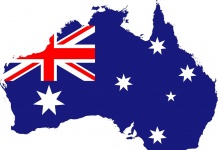Paperback sales are down, thanks to the baby boomers’ fading eyes. Could e-books–with adjustable font sizes–be the ticket for consumers and libraries alike? Some publishers are enlarging the type used in paperbacks. But that might put off younger people with better eyes.
Details from the Boston Globe via a reprint elsewhere:
…Despite occasional hot sellers such as “The Da Vinci Code,” book sales have dropped in the past few years, and mass-market paperback sales have declined steadily. One big reason, it seems, is that baby boomers, historically the biggest mass-market buyers, increasingly find those little books too hard to read.
Mass-markets are the thick, squareish paperbacks – mostly entertainment fiction – that you stick in your pocket or purse and read on the subway, airplane or beach. You might buy them in a regular bookstore, but more often you pick them off metal racks in convenience stores, airport newsstands, warehouse stores, Wal-Mart, and even supermarkets.
It’s a tried-and-true format. But something is wrong. According to the Book Industry Study Group, a publishing research organization, unit sales of mass-market paperbacks have fallen steadily in recent years, from 432 million books in 1998 to 406 million in 2003. The organization projects a further drop for 2004, when fully reported, to 404 million books.
Publishers, meanwhile, are scrambling to come up with a new format. Several – including Penguin, Pocket Books, and Harlequin Romance – have announced new lines of boomer-friendly paperbacks, which some in the business have dubbed “mass upperbacks.”
“We decided we should change the mass-market design, for the first time in a very long time,” said Leslie Gelbman, president of mass-market paperbacks for the Penguin Group. ” We’ve decided to make the size a little taller and slimmer, and the paper is better.” The type size is also larger, with more space between the lines. The price will be $9.95, up from the typical $7.99 for the standard size.
“We’ve done consumer research,” said Liz Perl, Penguin’s head of paperback marketing, “and found a segment who find the mass-market format uncomfortable. People say, ‘I need new glasses.'”
Penguin first tested the new format, called Penguin Premium, with Minette Walters’ “Disordered Minds,” a suspense novel priced at $10. “The positive response has been overwhelming,” said Perl. Starting in July, such classic mass-market authors as Clive Cussler, Maeve Binchy and Nora Roberts will appear as Premiums…
(Found, I believe, via the eBook Community list.)





























I always enjoy marketing research that “discovers” that consumers are demanding “supersize” versions of their product that end up costing 10-20% more.
Have you noticed how often vending machine areas will sell 16 oz and 20 oz cokes instead of 12 oz? Just exactly who was clamoring for that?
On another note, I consider now a buyer’s market for aftermarket paperbacks. I am buying some pretty incredible stuff for less than $5 (especially now that I’ve abandoned amazon.com . The trick is in buying them 2-5 years after first release, when copies are still plentiful, and people haven’t started hoarding them yet.
I have a literary friend who in addition to receiving lots of review copies from the publishers’ gravy train, just goes to local bookstores, spots paperbacks or DVD’s he knows are underpriced and resells them on amazon.com for 100-200% the original price. it seems relatively easy to figure out what sells for what (though used bookstores seem not able to figure this out).
Thanks for the info on Amazon alternatives, Robert. Of special interest: “After two unsuccessful emails asking amazon.com to explain the pricing discrepency, I tried price shopping on ISBN.nu and eventually did all my shopping on half.com.” – David